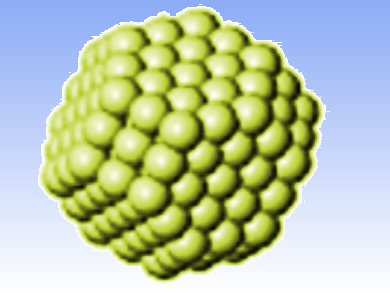Systematic Evaluation
The safety of nanotechnology is high on the scientific and political agenda. Qualifying and quantifying the issues remains difficult. PierPaola Pompa and colleagues at the Italian Institute of Technology in Lecce have, however, devised and tested what they describe as a “systematic and reproducible evaluation of nanoparticle toxicology in living systems”. Their approach is based on a physical assessment and quantification of the toxic effects of nanoparticles (NPs).
Novel materials that lie in the nano realm between the molecular scale and the bulk material may have properties and exhibit phenomena not manifest in the bulk material or predicted on the molecular scale. As such, there have been many studies of nano safety over the last decade to see how nanoparticles might be absorbed through inhalation, ingestion or the skin. However, NPs come in different sizes, shapes, and chemical composition. They have disparate surface chemistry, diverse surface-to-volume ratios and incredibly varied chemical reactivity. So, understanding and predicting their effects is difficult.
The mammalian immune system can cope with alien invaders, pathogens, toxins and other potentially harmful species, but little is known of its response to absorbed nanoparticles. “The determination of the overall kinetic effects of the interaction between NP and body cell and the assessment of toxicity is a complex multiparametric problem”, the researchers say. They add that absorption route, i.e., inhalation, ingestion or dermal contact, affects the primary interaction between NPs and cells. But it is the physical and chemical properties of the NPs that determines how the tissue, the organ and ultimately the organism process them — either metabolizing and excreting the NPs or else succumbing to toxic effects.
Size Doesn’t Matter
In order to somehow clarify the physical-chemical toxicology status of NPs, the team has investigated the effects of citrate-capped gold nanoparticles on different tissues of the model organism Drasophila melanogaster. They tested NPs of different sizes (5, 15, 40, 80 nm) and determined how size-dependent toxic effects arise, the effect of surface area, and whether or not toxicity is determined by absorbed dose rather than those factors. They point out that the approach developed was applied to a model scenario, involving the typical ingestion of NPs by an organism through ingestion of food or water.
The success of the approach in defining the toxic parameters of gold nanoparticles was then extended to two other widely used types of NP, semiconductor quantum dots, widely used in research today in academia and the electronics and sensor industries and gold nanoparticles with a different coating. One surprising discovery is that size does not matter when it comes to the effects of surface area on nanoparticle toxicity. For NPs in the range 5 to 80 nm size, surface area does not play a primary role in determining particle toxicity and so does not affect dose toxicity as might have been assumed. However, the number of NPs absorbed does, perhaps as one might expect, correlate directly with toxicity for those NPs that have a detrimental effect on the organism.
The next step will be to extend the approach to more diverse classes of NPs, such as carbon nanotubes and other non-spherical particles as well as to those that undergo aggregation or ion release. “This approach may pave the way to a systematic classification of nanomaterials, leading to important developments in risk assessment and regulatory approval, as well as in a wide range of nanomedicine applications”, the team says.
Predicting Safety
ChemistryViews asked Andrew Maynard, Director, University of Michigan Risk Science Center, USA, for his assessment of the nano safety approach taken by Pompa’s team. “The complexity of engineered nanomaterials presents a huge challenge to anyone trying to predict how safe or toxic a new material might be”, he explains. “Despite many groups working on the problem, no one has yet come up with a formula that indicates ‘probably dangerous’ or ‘probably safe’.” Pompa and colleagues think they are getting close and certainly show that the impact of a specific type of gold nanoparticle on fruit flies follows a certain pattern when ingested, and that the more numerous the ingested particles, the greater this impact is. “There are even indications that their test can identify more dangerous and less dangerous nanoparticles”, Maynard adds.
However, he points out that this result only considers the context of NPs being eaten by fruit flies. “It remains unclear what their results mean for human exposure to engineered nanoparticles, or what the basis might be for deciding relative levels of potential toxicity”, he adds. “And, it is even less clear how their results relate to inhalation exposure to nanoparticles, where a suite of inhalation-specific mechanisms may lead to very different results to those predicted by fruit flies eating the material.”
This research adds to the pool of information on nanoparticle safety, but, adds Maynard, “there’s still a long way to go before we can both predict how safe a new material will be, and actually engineer it to be safe.”
- Physical assessment of toxicology at nanoscale: nano dose-metrics and toxicity factor
P. P. Pompa, G. Vecchio, A. Galeone, V. Brunetti, G. Maiorano, S. Sabella, R. Cingolani,
Nanoscale 2011.
DOI: 10.1039/c1nr10233h - Andrew Maynard’s website



